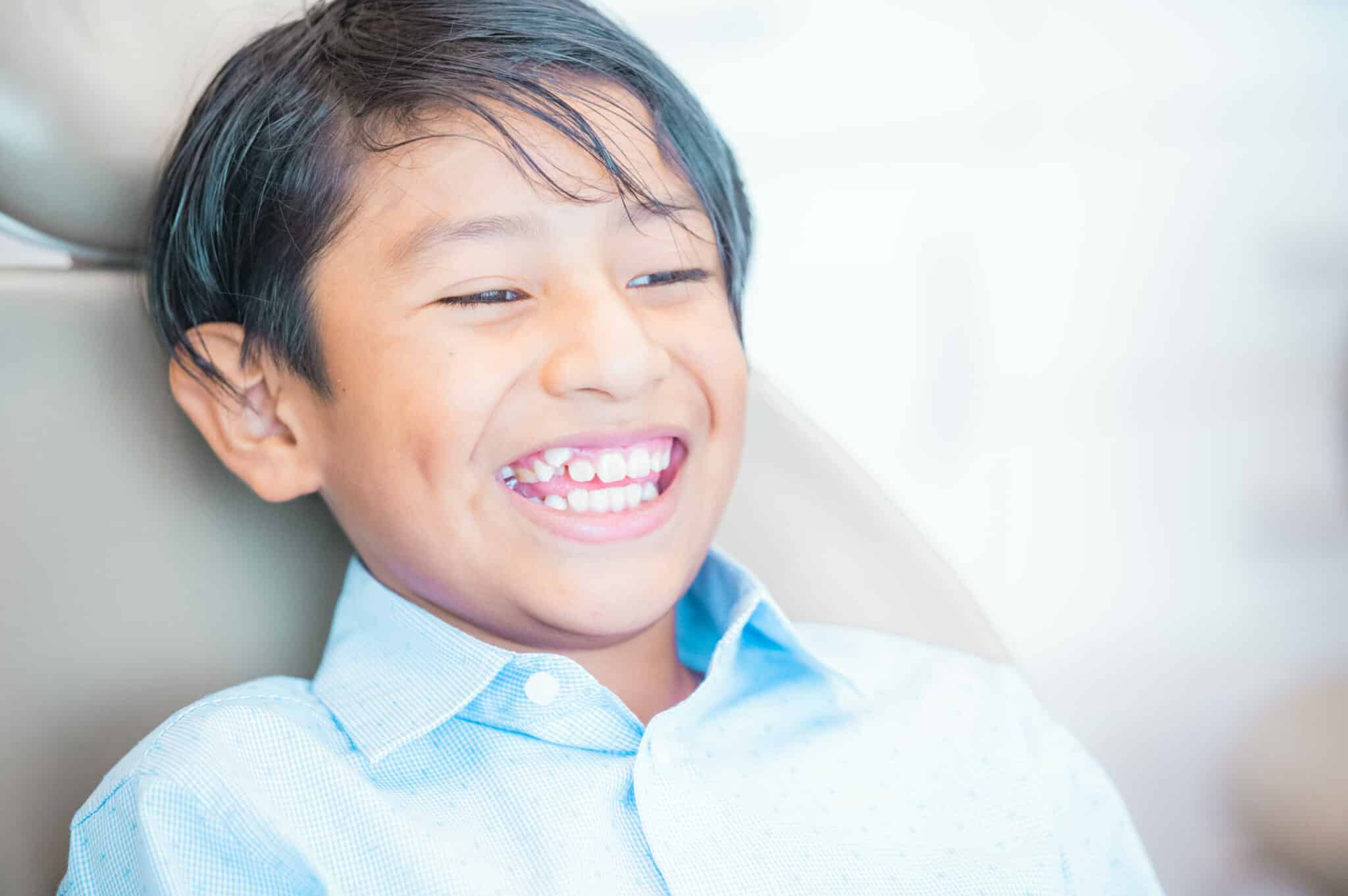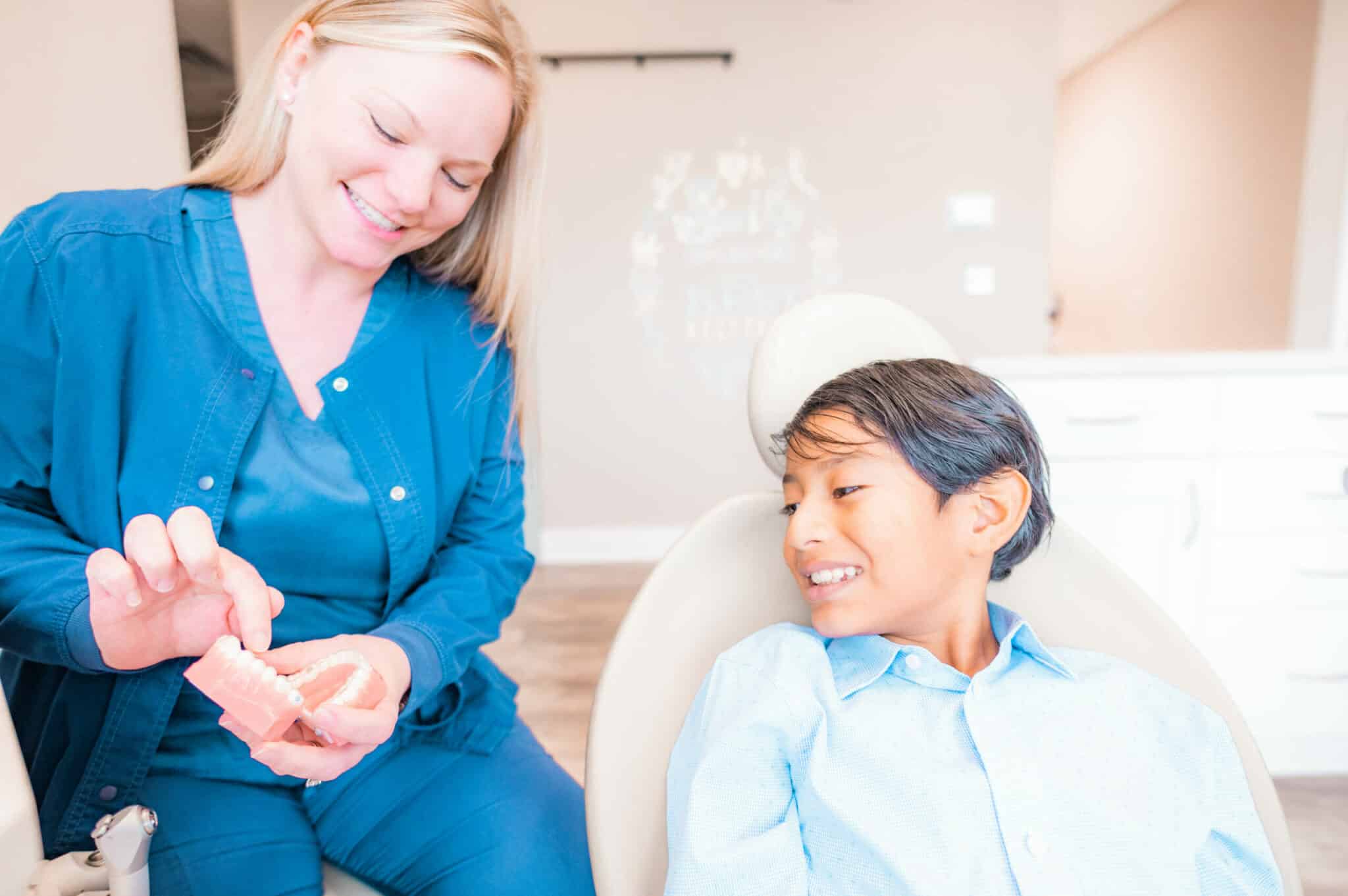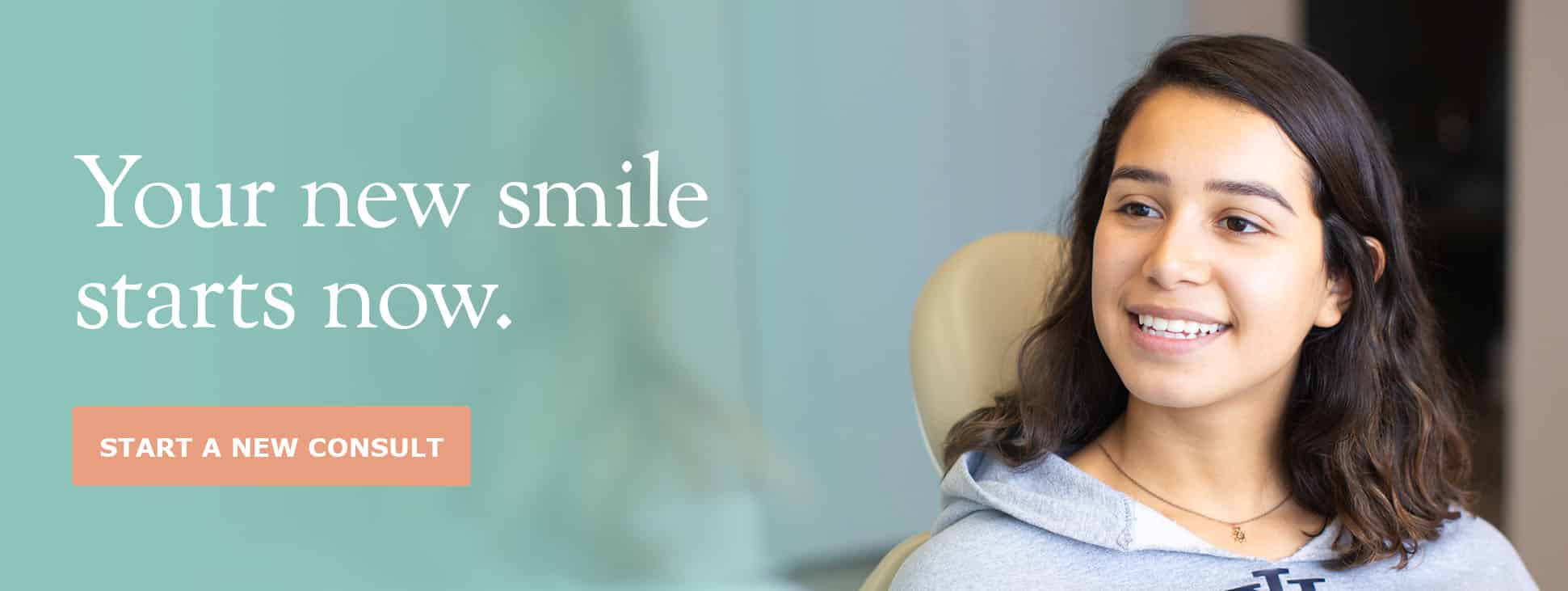Are teeth bones? Why do you have pointy canine teeth? Why do we have baby teeth first?
Teeth are funny things and unique to everything else on our bodies. What do you know about teeth?
At Smiles By the Bay, we love talking teeth! Sure, we’ll talk to you about straightening your teeth with braces or Invisalign and flossing and brushing your teeth, but that’s not all we know about teeth! We love telling you fun facts about your teeth.
Did you know your parents may determine how many teeth you have? How is that possible? Read on, and we’ll answer that question and many more!

What Are Teeth? Are Your Teeth Bones?
Your teeth are a very unique part of your body. You may think teeth are bones because they connect to your skull, but that’s not the case. They are similar to bones, but there are distinct differences.
Bones have a thick outer shell and a hollow area with soft tissue called marrow. Cells make up the outer shell of bones.
Enamel, the hard outer layer of your tooth, does not have cells. So, what are teeth made of? Enamel is a hard shell like bone, but it’s made up of different types of minerals instead of cells. It also protects soft tissue, but it’s different from marrow.
Parts of a Tooth
Enamel protects two layers of your tooth: the dentin and the pulp. Blood vessels and nerves are located in the pulp. It is the living part of your tooth. The dentin protects your pulp and serves as a foundation for your enamel.
The upper part of your tooth is the crown. This is the part you can see. The part you can’t see is called the root. The root of the tooth is embedded in your jaw and holds your tooth in place.
Does that mean your teeth can die? Absolutely, which is why you need to practice good oral hygiene. Keeping your enamel strong keeps your tooth strong and alive.

Different Types of Teeth
You have several different types of teeth, and there are all kinds of names for teeth. Maxillary teeth, mandibular teeth, primary teeth, permanent teeth, canines, molars, and more. What do they all mean?
“Maxillary teeth” refers to your upper teeth because your upper jaw is called the maxilla. Your lower jaw is called the mandible, so your lower teeth are called mandibular teeth.
You have two sets of teeth in your lifetime. “Primary teeth” are also called baby teeth. They are the first teeth you get. Once they fall out, they are replaced with your permanent teeth.
Then, there are the names of the teeth themselves. Let’s explore the types of teeth and their functions.
Incisors
You have two sets of incisors: central and lateral. You have an upper set and a lower set. The central incisors are your two front teeth on top and bottom in the center of your mouth. The lateral incisors are the teeth on either side of your front teeth.
What are incisors used for? They are made to bite into food. Their thin shape slides into food more easily, allowing you to cut food away and move it inside your mouth to chew it further.
Canines
Your canines are those pointy teeth on either side of your incisors. You have four canines: two upper and two lower. The canines’ pointed shape allows you to tear food, such as meat.
Premolars
Sometimes called bicuspids because of their two points, premolars are the teeth between your canines and your molars. You have eight premolar teeth, two on each side on top and two on each side on bottom — but not as young children. Baby teeth do not include premolars.
Premolars erupt where the baby molars once were. As your jaws grow, they make room for the molars in the back of your mouth. Premolars start grinding your food once you’ve bitten and torn it with your incisors and canines.
Molars
The molars are the big teeth in the back of your mouth. Most people have 12 molars — six on top and six on the bottom. The first set is called the first molars, the second set is called the second molars, and the third set of molars is called wisdom teeth.
Your molars grind your food into small pieces that can be digested easily. The better you chew your food, the fewer digestive problems, such as gas, indigestion, and sour stomach.

Wisdom Teeth: How Many, and Do You Need Them?
Remember the question we asked at the beginning: Do you know your parents may determine how many teeth you have? How is that possible?
Most people have four wisdom teeth — two on top and two on bottom. But about 37% of Americans have less than four wisdom teeth, and some have none! If both of your parents are missing wisdom teeth, there’s a good chance you will be missing some, too. If only one parent is missing wisdom teeth, there is still a chance you could end up with fewer than four wisdom teeth.
Do you need your wisdom teeth? Many people have them removed because they believe they will crowd their teeth and make them crooked. The truth is that few wisdom teeth cause other teeth to become overcrowded. If there isn’t enough room, the only teeth that will likely come in crooked are the wisdom teeth themselves.
Can you live without wisdom teeth? Absolutely, but it’s always necessary to have them removed. Like your other molars, wisdom teeth help grind your food for better digestion. If your wisdom teeth aren’t bothering you or causing dental problems, there is no need to have your wisdom teeth removed.
Baby Teeth vs. Adult Teeth
How many teeth do you have? You start with 20 primary teeth that can bite and chew small bits of food and eat soft foods. As you get older, you’ll need bigger, stronger teeth. That’s when the primary teeth start to come in.
The baby teeth fall out to make room for the permanent teeth. Baby teeth usually fall out in the same order they come in — front teeth first, then canines and molars. Your permanent teeth replace them. Including wisdom teeth, adults have 32 permanent teeth.
Your baby teeth should all be gone when you hit your teens. Your wisdom teeth, the last teeth you get, erupt between 17 and 20 years of age. With proper care, those teeth should last the rest of your life!
Taking Care of Teeth in Annapolis, MD
Your teeth and oral health are vital to your overall health. They start the digestion process by grinding your food for your stomach. They also start breaking down food to get nutrition from it. That’s why keeping your teeth clean and healthy is so important.
Smiles by the Bay wants you to have clean, beautiful teeth throughout your life. That’s why we treat patients of all ages with braces or Invisalign! We know that straight teeth are easier to clean and healthier.
Schedule an appointment for orthodontic care in Annapolis, MD, if you’re ready for braces or Invisalign. Let’s talk teeth!







